Building the "Fountain of Youth" - Electrical Modifications
"If there is magic on this planet, it is contained in water."
- Loren Eiseley
Summary: This is a series of articles describing in extensive detail how I've modified an off-the-shelf acrylic polishing machine for use as a hydrogen/oxygen gas inhaler. What I have done is largely—but not entirely—based on previous work done by Brown's Gas expert George Wiseman.
If you are adventurous, moderately skilled at working with your hands, and short on cash as I was when I took on this project, fasten your seatbelt! Consult all the articles in this series, and get busy building, but, be forewarned: this series is not a hand-holding "How To Do It" as much as it is a "How I Did It."
However, if you are more inclined to simply "cut to the chase," you can save yourself an incredible amount of time and trouble by ordering an HHO health machine "off-the-shelf" from Eagle-Research.
Series Index
- Part 1: "Fountain of Youth" - Embarking On A New Maker Adventure
- Part 2: "Fountain of Youth" - Figuring Out How To Build It
- Part 3: "Fountain of Youth" - Inside an Acrylic Polishing Machine
- Part 4: "Fountain of Youth" - ~Euphoria!~
- Part 5: "Fountain of Youth" - Standing On Giant Shoulders
- Part 6: Building the "Fountain of Youth" - Mechanical Modifications
- Part 7: Building the "Fountain of Youth" - Tower Cap
- Part 8: Building the "Fountain of Youth" - Electrical Modifications
- Part 9: "Fountain of Youth" - Micro:Bit Python Control Software
- Part 1: "Fountain of Youth" - Embarking On A New Maker Adventure
- Part 2: "Fountain of Youth" - Figuring Out How To Build It
- Part 3: "Fountain of Youth" - Inside an Acrylic Polishing Machine
- Part 4: "Fountain of Youth" - ~Euphoria!~
- Part 5: "Fountain of Youth" - Standing On Giant Shoulders
- Part 6: Building the "Fountain of Youth" - Mechanical Modifications
- Part 7: Building the "Fountain of Youth" - Tower Cap
- Part 8: Building the "Fountain of Youth" - Electrical Modifications
- Part 9: "Fountain of Youth" - Micro:Bit Python Control Software
Electrical Modifications...
The time has come to look at some of the electrical modifications made to get the machine up and running in a controllable fashion. First, have another look at the original wiring, "as-delivered" when I purchased the acrylic polishing machine.
H160 System Wiring Schematic. ~ Image by the author.
The original wiring diagram is above, and the new, modified wiring diagram is below. If you want to understand how I modified the machine, I'd suggest placing the two diagrams side by side and noting the differences.
"Fountain of Youth" Modified Wiring Schematic ~ Original image by @creatr
As you compare the two diagrams, please notice the following:
- The ammeter and the fan are unchanged
- The power input is unchanged
- The over-pressure switch has been bypassed and completely removed
- A new subsystem has been inserted between the power supply and the HHO tank
Comparing the two should make it clear that the main "trick," in essence, is to break the circuit between the power supply and the HHO tank in order to pulse-width modulate the power delivered to the tank. This allows for adjusting the gas volume easily, as well as achieving most other design change goals.
Photo of Wiring Before Mods ~ Original image by @creatr
In the "before" photo, you can see two grey wires coming from the over-pressure switch. That switch is "normally closed" and only opens if the tank pressure exceeds some upper limit. In our modified design, there is nothing but water restricting the free flow of HHO, and so there really is no need for an over-pressure switch.
You may wonder, "What happens if someone closes a door, pinching one of the delivery tubing lines?" There is a very low-pressure relief valve on the two bubblers that scrub lye mist out of the gas, and they will vent before the tank pressure can reach a dangerous level.
You can also see the RED and BLACK wires going from the power supply to the tank. That is the circuit that our modification breaks.
The next photo shows the wiring inside the machine after electrical modifications. There is a lot going on in this "after" photo, so you'll want to keep coming back here to follow the written descriptions later in this installment.
Photo of Wiring After Mods ~ Original image by @creatr
You can see (look on the right by the power switch) that the pressure switch wiring has been short-circuited directly between the main power switch and the power supply. I simply cut the grey wire and spliced it together, covering the splice with a piece of green heat-shrink tubing.
You can also see that the black and red power wires now connect to a MOSFET switch (close-up below).
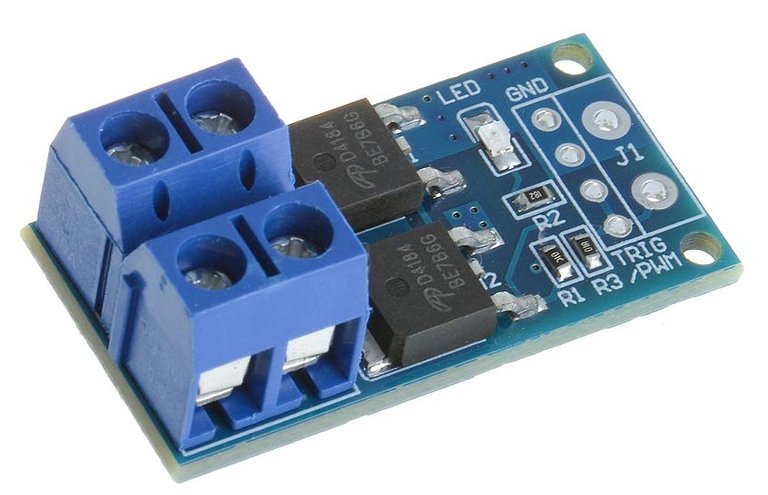
MOSFET Switch ~ Image source: Amazon)
I discovered that, when operating, the MOSFETs would get quite hot even though they are nominally operating well below their rated 15 (continuous)/30 (surge) amps. Rather than worry about that, I bought some nice little copper heat sinks. These are finned pieces of copper that came with thermally conductive adhesive strips. You can see the heatsink in place in the "after" photo (as well as a number of other things I'm about to mention).
Copper heatsinks with thermal adhesive strips ~ Image by the author.
Above the switch, I installed a terminal strip. This makes it easy to disconnect the HHO tank for removal and cleaning (see Episode Six). Note that I simply disconnected the existing tank wires from the power supply, and added new wiring up to the MOSFET switch and the new terminal strip.
Another important discovery was that the Micro:Bit PWM output level is not quite adequate to directly drive the MOSFET switch.

Voltage Level Shifter ~ Image source: Amazon)
To remedy this, I bought a Level Shifter circuit and mounted it on the breadboard area of the Micro:Bit breakout board. If you were to use a 5-volt Arduino instead of a Micro:Bit, you might be able to drive the MOSFETs directly; but you'd need a replacement for the Micro:Bit LED display array.
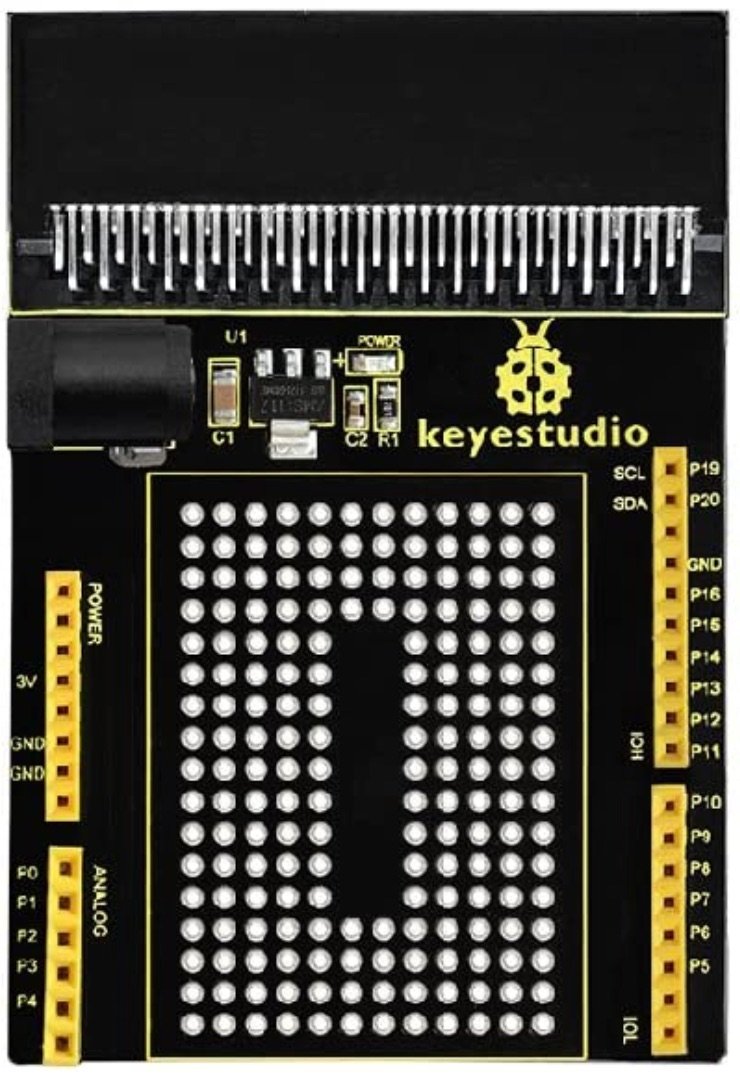
Micro:Bit Breakout Board ~ Image source: Amazon)
Rather than mount the Micro:Bit, the level shifter, and the Breakout Board on the machine cabinet, I chose to turn that sub-assembly into a remote dongle. The schematic presented earlier accurately shows the cable connecting the dongle to the chassis. Only three of four available wires are in use: a 9-volt power wire, a Ground wire, and the PWM wire.
In the "after" photo, the dongle cable is fed through the same grommeted hole in the firewall as the HHO tank power wires, and it ends in a BLUE heat-shrink covered connector that you can see coming up from below about in the middle of the image.
I had intended to use the fourth wire in the dongle cable for audio annunciation (i.e. to audibly signal startup, shutdown, etc.) but I ran into two separate problems. First, the wire picked up horrendous electrical noise, making its use for audio out of the question. Second, I pretty much ran out of program space when programming the Micro:Bit. While I'm sure these are engineering issues that can be overcome through any of several means, I didn't consider it worthwhile to divert my energy to that end at this point in the project.
If you're wondering what the RED/GREEN/BLACK wires floating unconnected in front of the left side of the power supply are, they are the unused proposed audio connection.
The slides below show how the dongle wire is fed through the hole that used to mount the original stainless steel bubbler. I inserted a rubber grommet to prevent the wire from chafing, and I knotted the wire so that the knot would act as a strain relief if the cable is pulled from outside the chassis. You can also see the completed dongle in my hand.
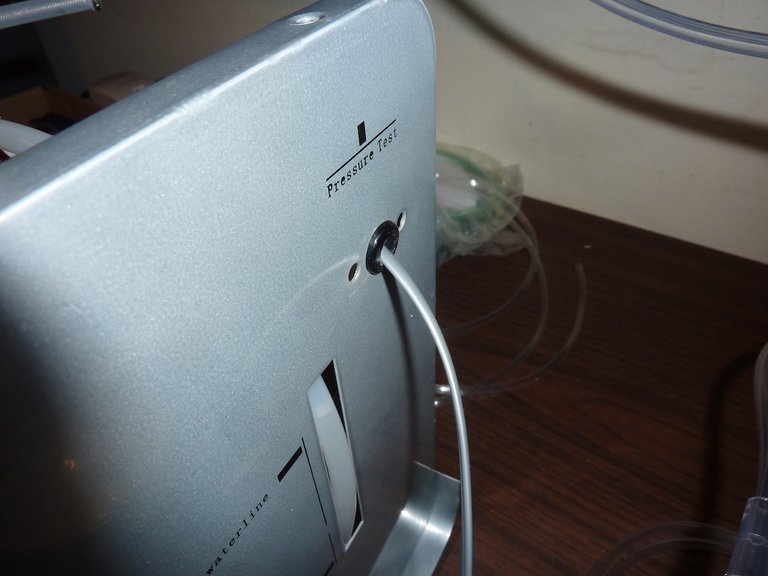

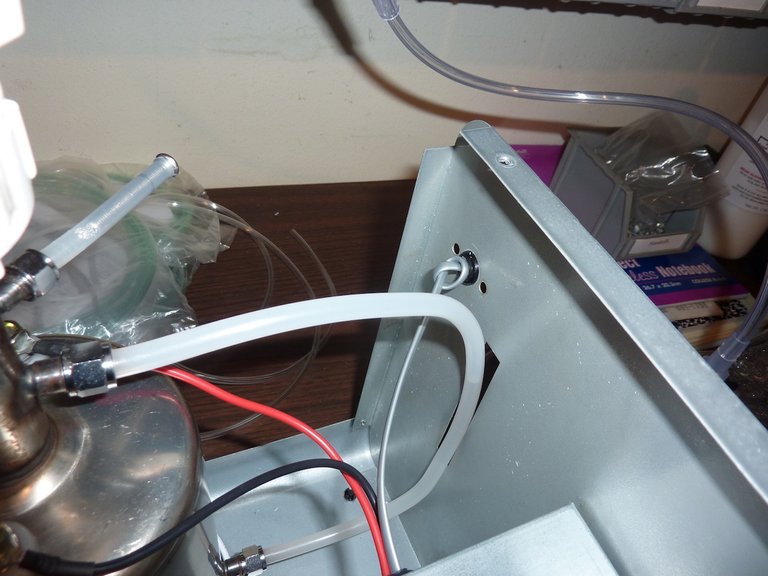
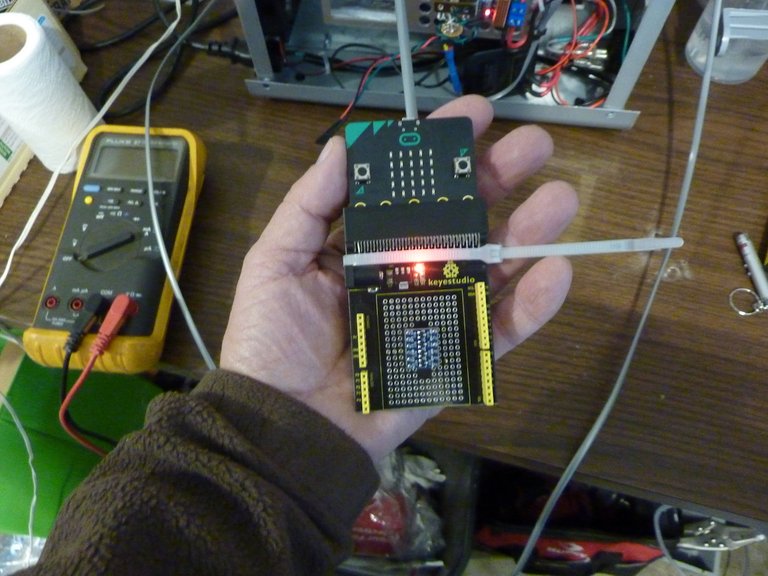
<<<-Drag to SCROLL Left and Right->>>, CLICK for full-sized image. All Images by @creatr
I also soldered connecting wires directly to the wall-wart 9-volt power supply so that I could tap incoming line power directly from the main power supply terminal strips.
Power wires for 9-volt supply ~ Image by the author.
Note the use of heat-shrink tubing to insulate the 110-volt wall wart prongs, as the wart is left sitting on the bottom of the machine chassis.
9 volt supply with connecting wires. ~ Image by the author.
Here's a close-up of the main power switch before modification. You can see the RED and BLACK (hot and neutral) mains wiring attached to the bottom pair of contacts. Note that the GREEN ground wire goes directly above to the power supply terminal strip.
The red (AC hot) wire on top of the switch remains connected as-is, and the grey wires are cut and spliced together, removing the pressure switch from the circuit.
DPST Power Switch. ~ Image by the author.
Feel free to ask questions.
Are you thinking of building your own HHO for health machine? We definitely want to hear from you.
Coming up next time:
Python software for the Micro:Bit that runs the show...
See you next time!
DISCLAIMER:
I am not a doctor, nor am I a medical professional of any kind. This series of articles describes my very individual, personal quest to investigate credible reports of the benefits of breathing hydrogen and oxygen gas, drinking hydrogen enriched water, and applying hydrogen and oxygen gas to weakened or diseased body parts. The devices I am building, the tools and materials I am using, and the gases I expect them to produce, are potentially dangerous and even life-threatening if used carelessly. Should you choose to use any of this information, do so only with the most serious care taken for safety. I am in no way responsible for any use you may make of this information, which you undertake entirely at your own risk.
AquaCure® is a trademark of Eagle Research.
~FIN~
you can still reward it: CLICK HERE.
P.S. If you have an "in" with anybody at Steemit, Inc. - Would you please ask them to get rid of these damn, extremely annoying "off-website" arrow/boxes? The have, overnight, made Steemit ugly. There are much better solutions.
For more stories, please visit our Library Stories Shelf - Just CLICK the shelf below.

Introducing: The SILVERengines proton - Image by @creatr
CONTACT US - Will Exchange for Steem
You are why I'm here on Steemit!
I have very eclectic interests and hope, over time, to write about them all.
⬇️To Check Out @creatr's World⬇️CLICK Each Image Below⬇️

|

|

|
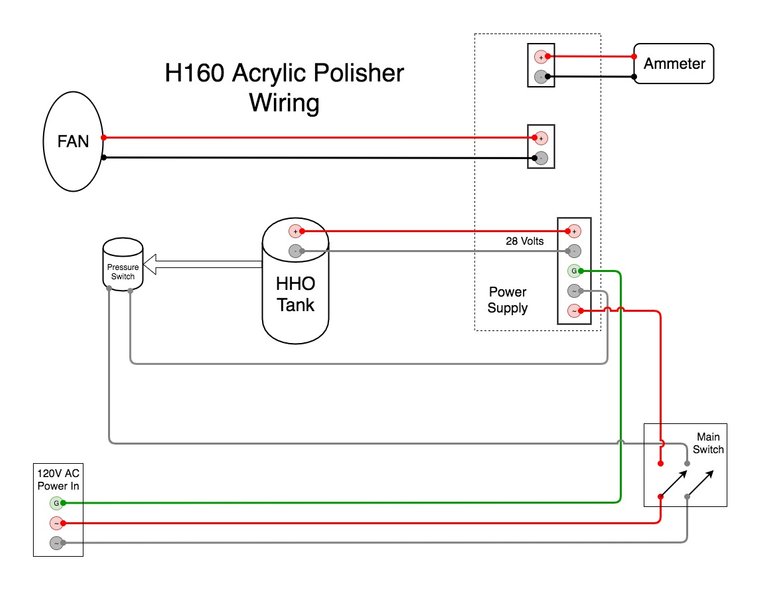
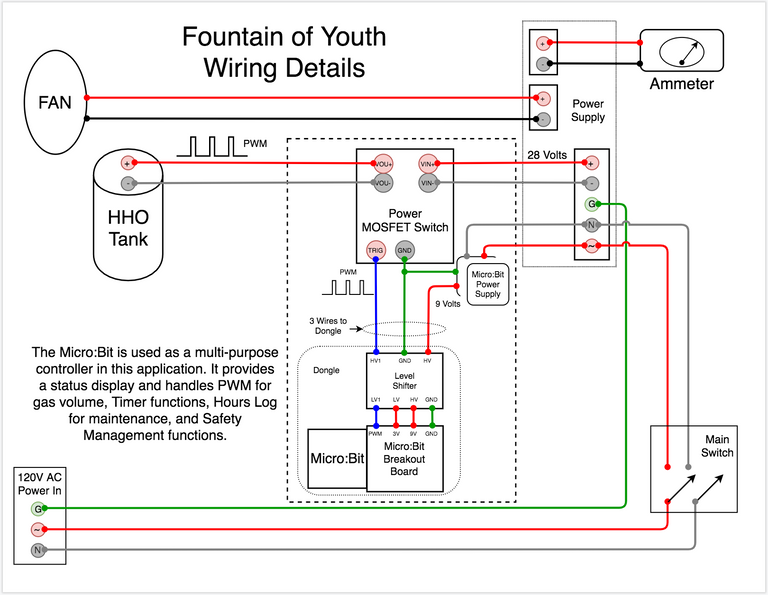
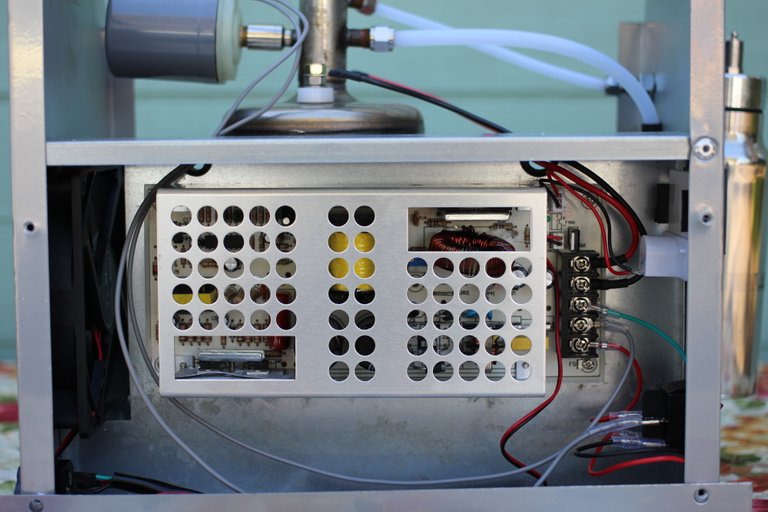
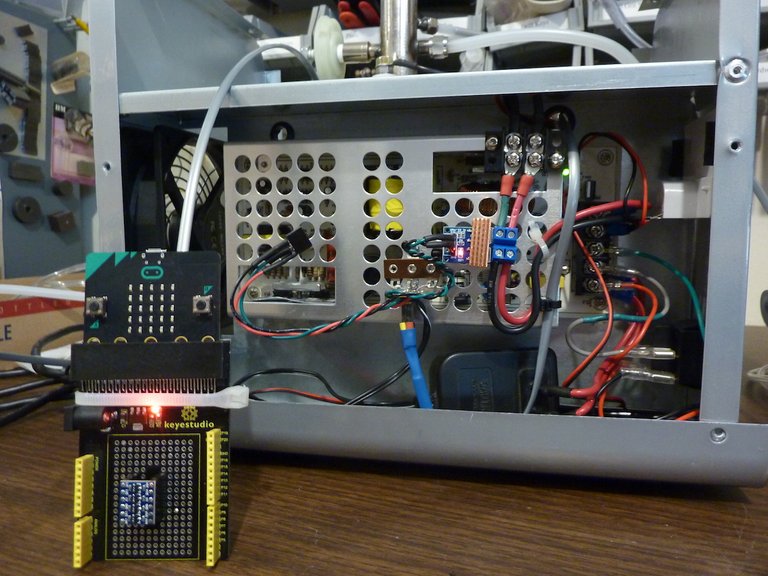
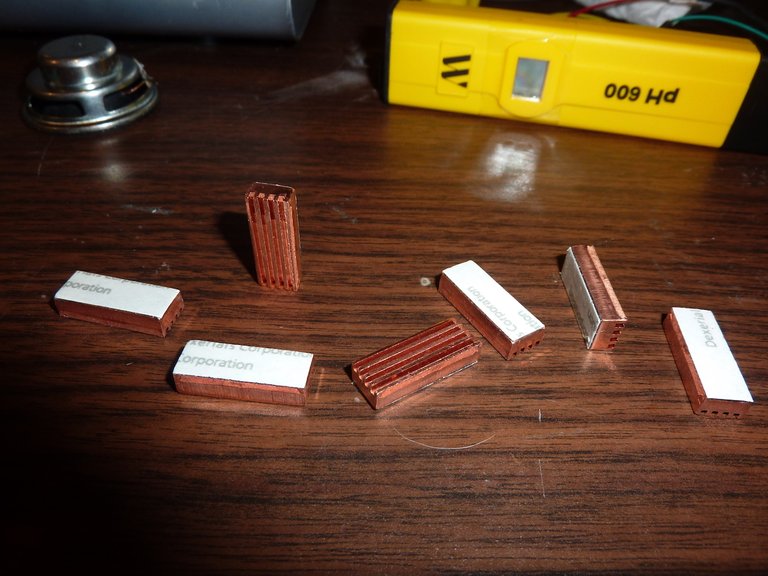
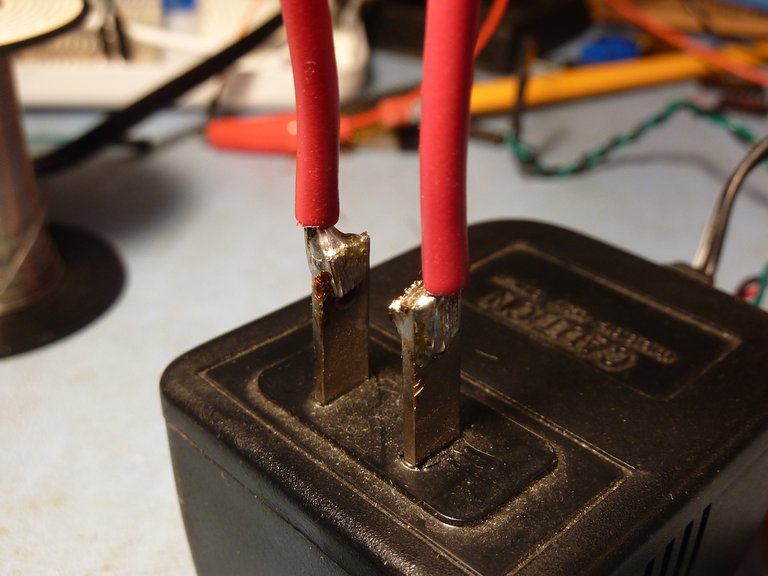
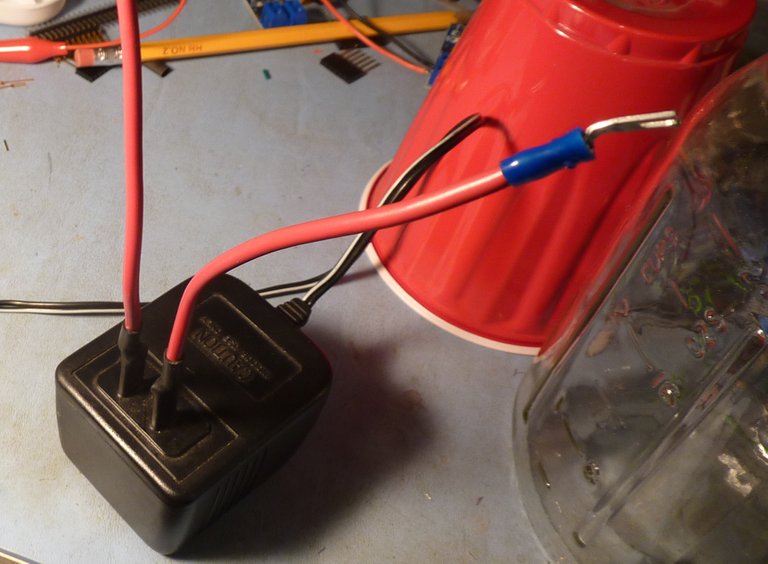
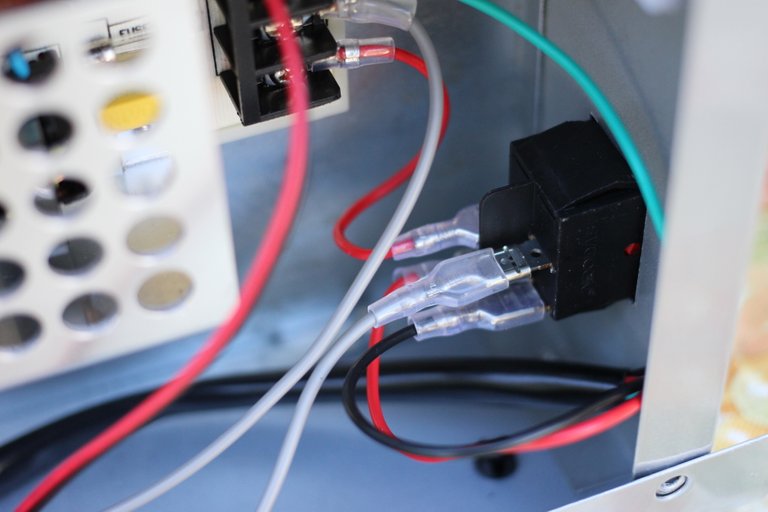



Nice to see you on Hive, @creatr. And thanks for posting this to the chain for posterity.
BTW, in case you haven't noticed, peakd.com has implemented some solutions to the requests in your signature. The links are clean, and every post has the option to tip the user directly.
Hi my friend!
So nice to hear from you. :)
Thank you for the heads up about peakd, I'll have to check it out...
How are you doing? I've been uber frustrated by what appears to me to be global hysteria... primarily government and media driven.
Hello dear friend @creatr how long without reading you.
You are amazing, how much knowledge do you have. How much passion do you put into the things you create.
I wish you a great week
My friend!
What a lovely surprise to hear from you!
I have unfortunately just been too busy dealing with life and survival and the present worldwide craziness to do much posting, or to get around visiting old friends like you... So sorry!
I hope you and your loved ones are doing well, and that I can get back to being here more often.
Take care!
Yes, I was very happy to see your post and be able to greet you
here as always we do what we can to spend the best possible.
Luckily we are all well, that it is not little for the moments so difficult that it crosses the world.
A huge love for all his family.
Stay safe dear friend @creatr
I am very pleased to see you back, hope you are all ok :)
Hi, Karen!
Still too busy, but I need to get this series finished...
Thanks for saying hello! :D
Hi, Nice to know you are still around :)